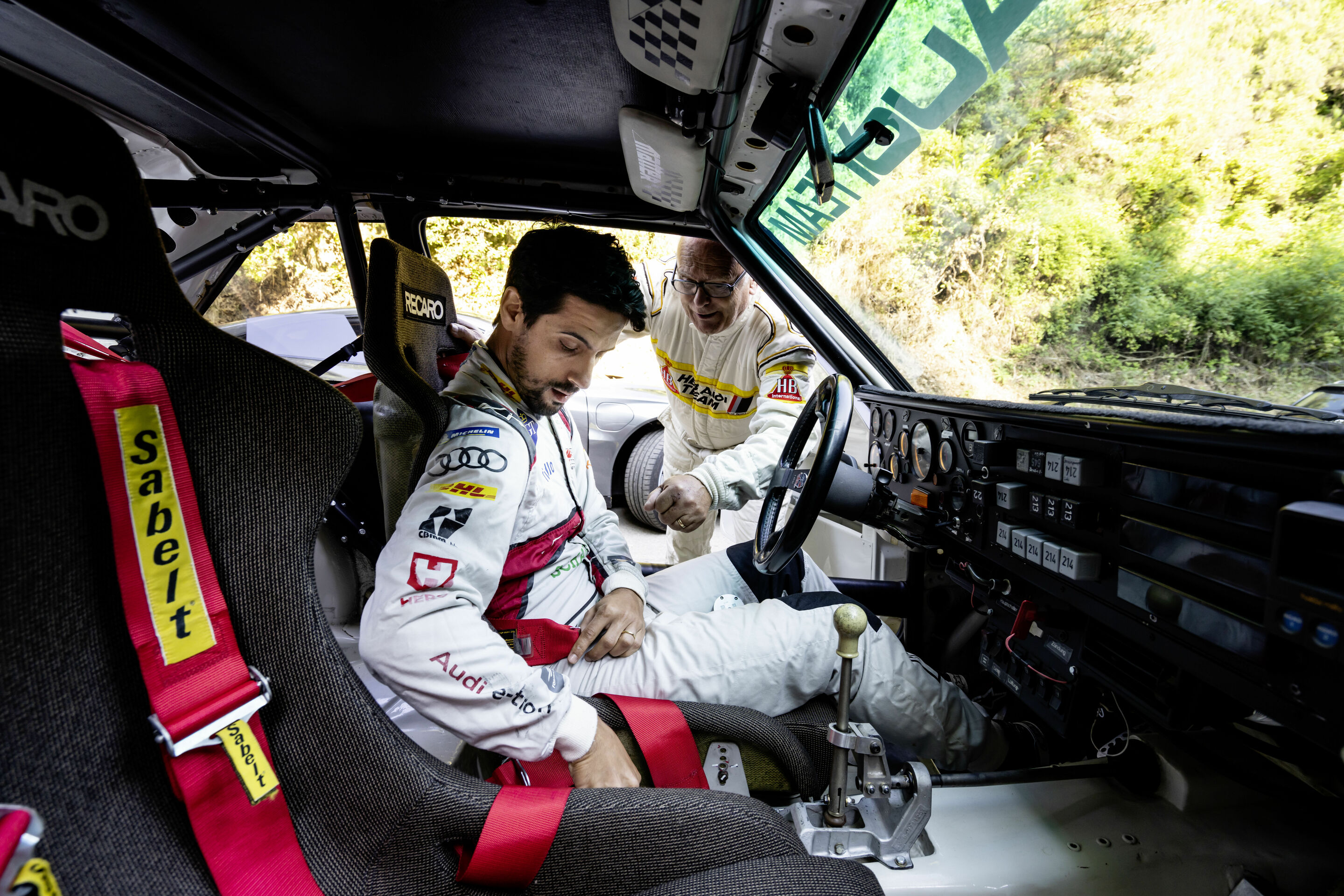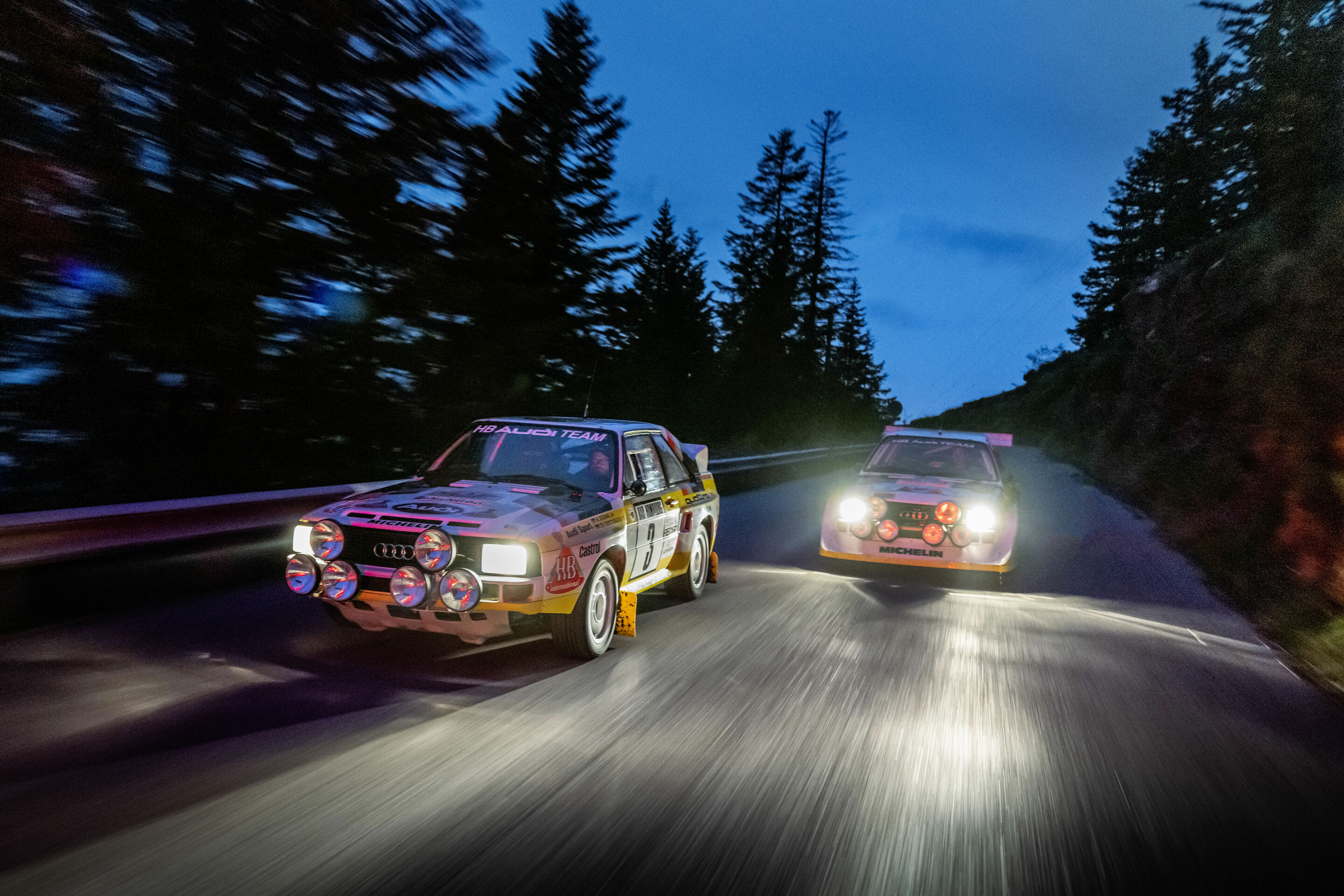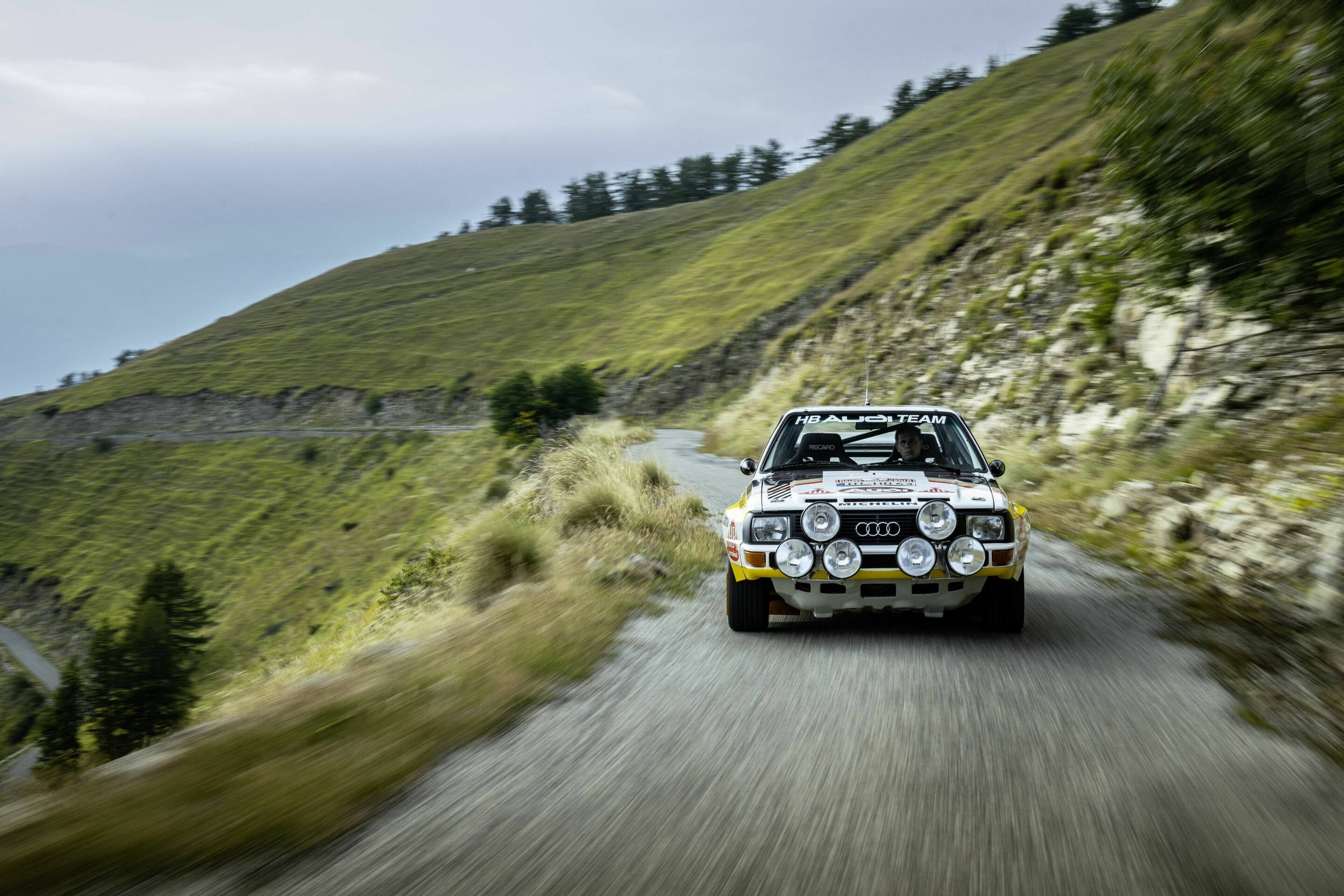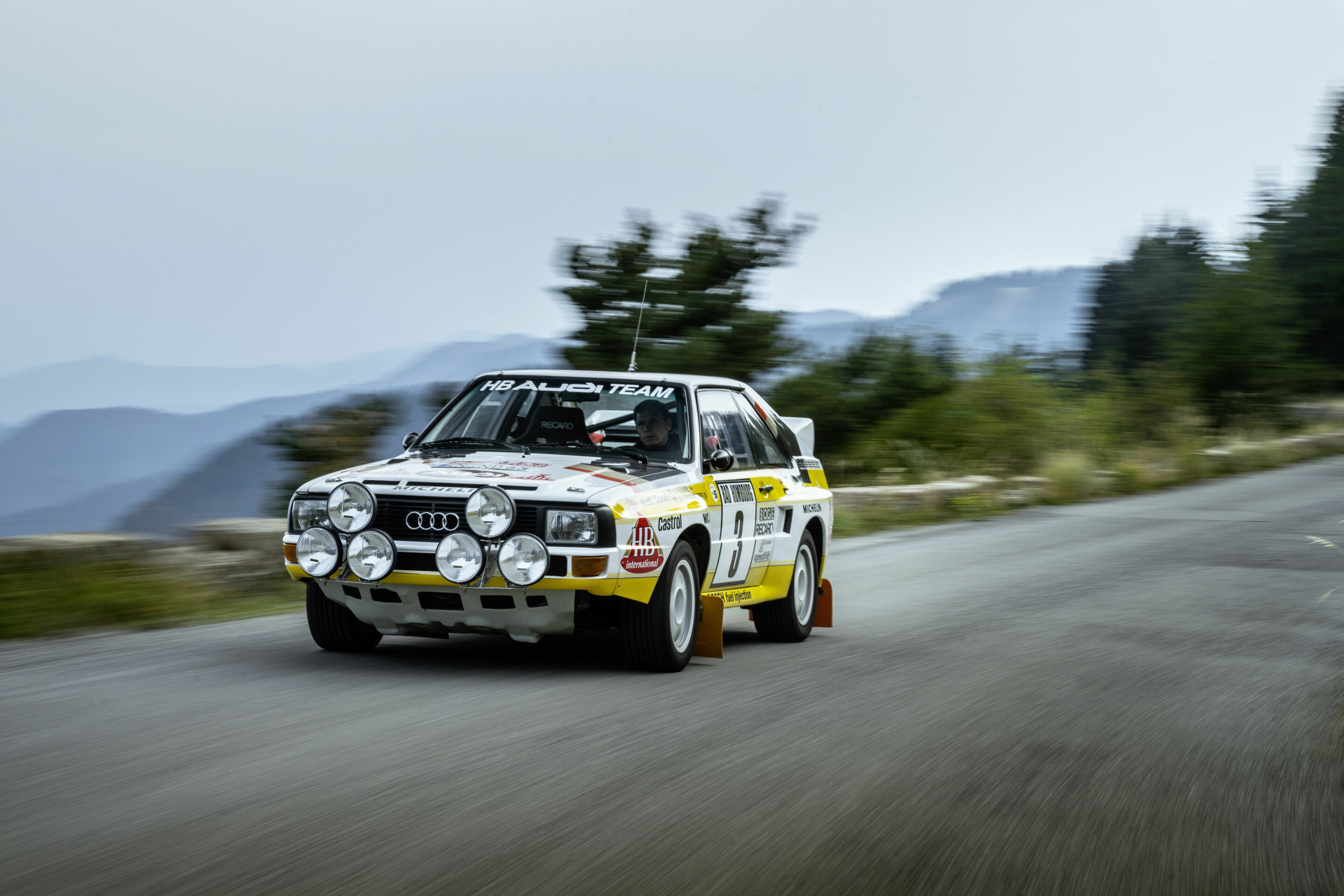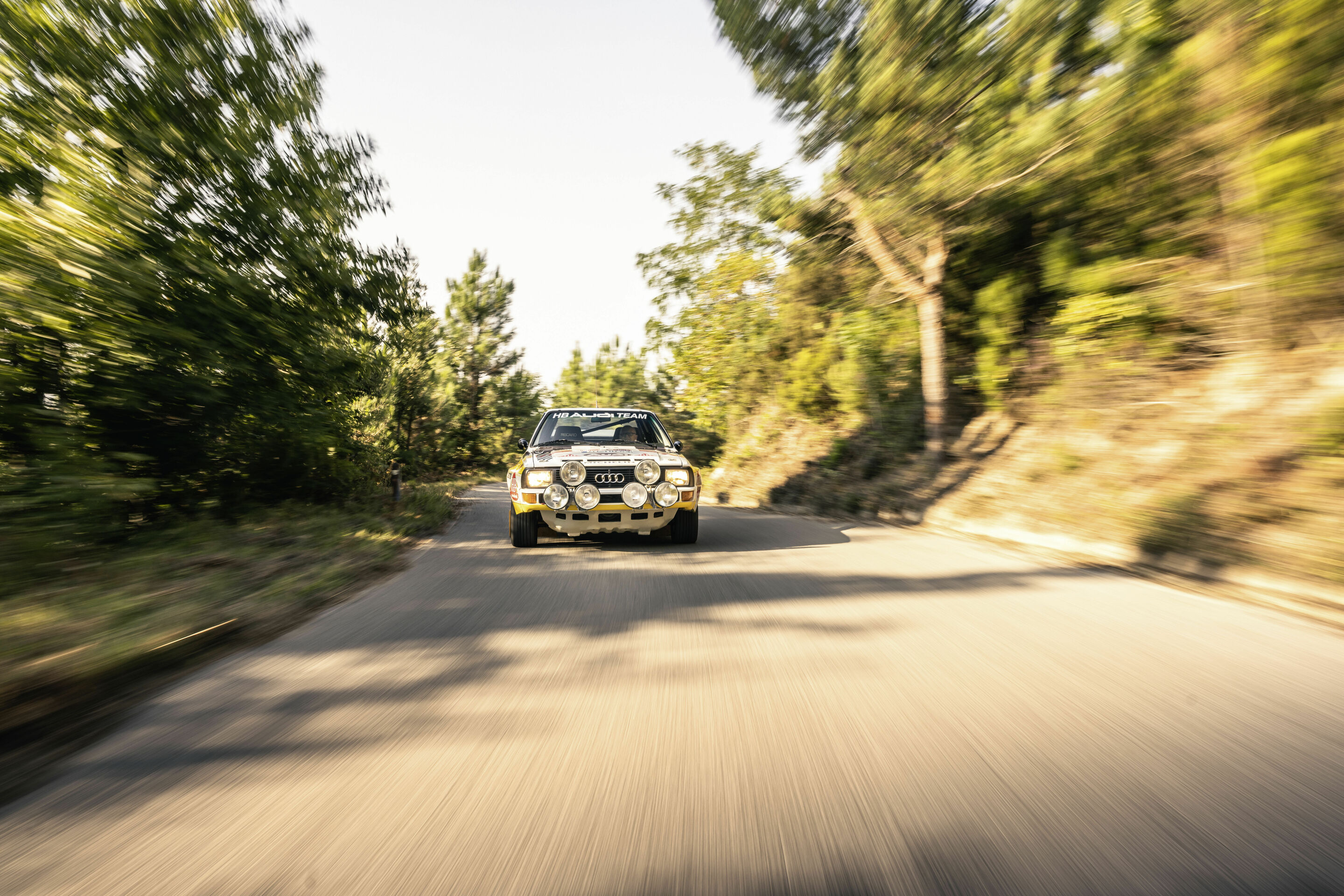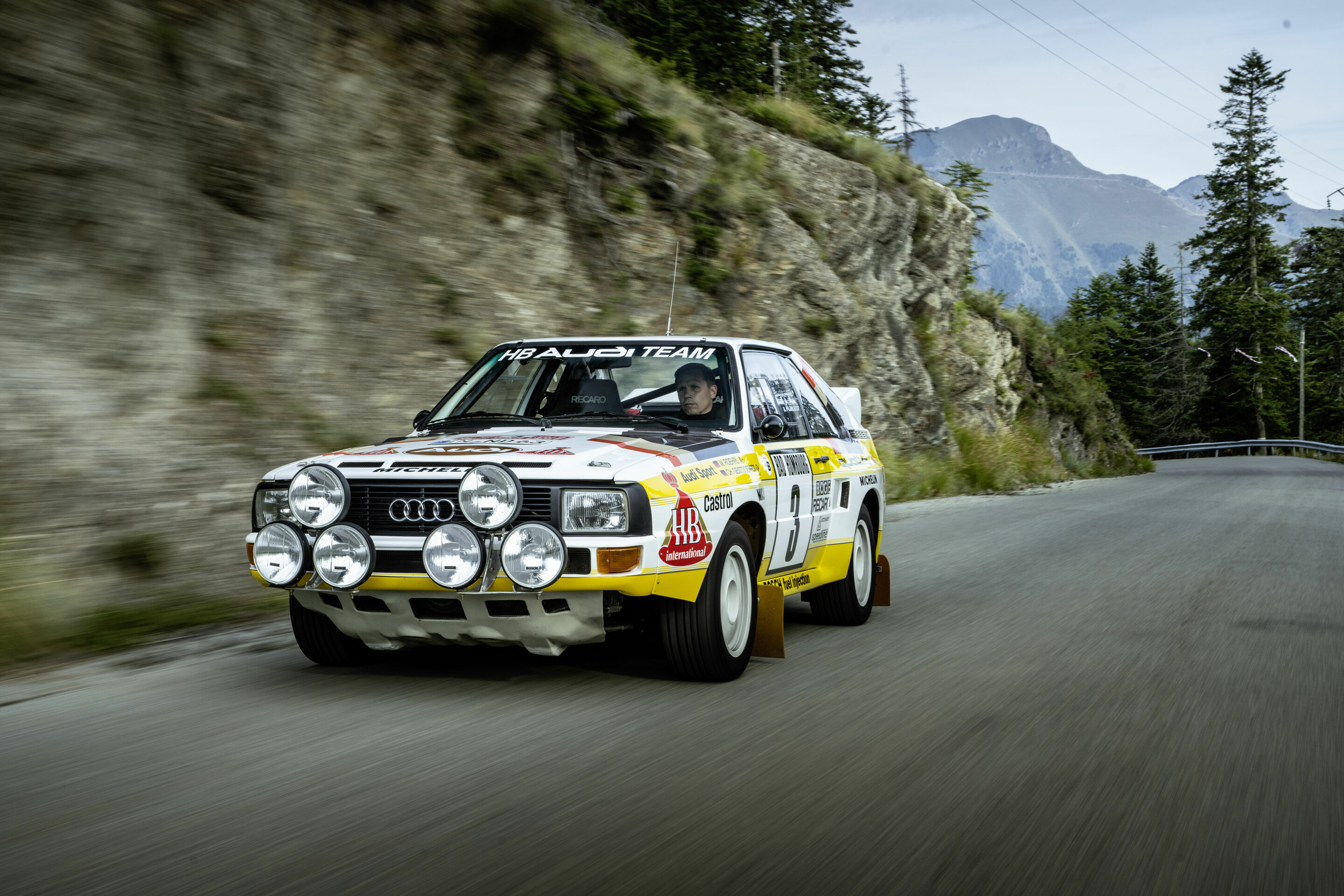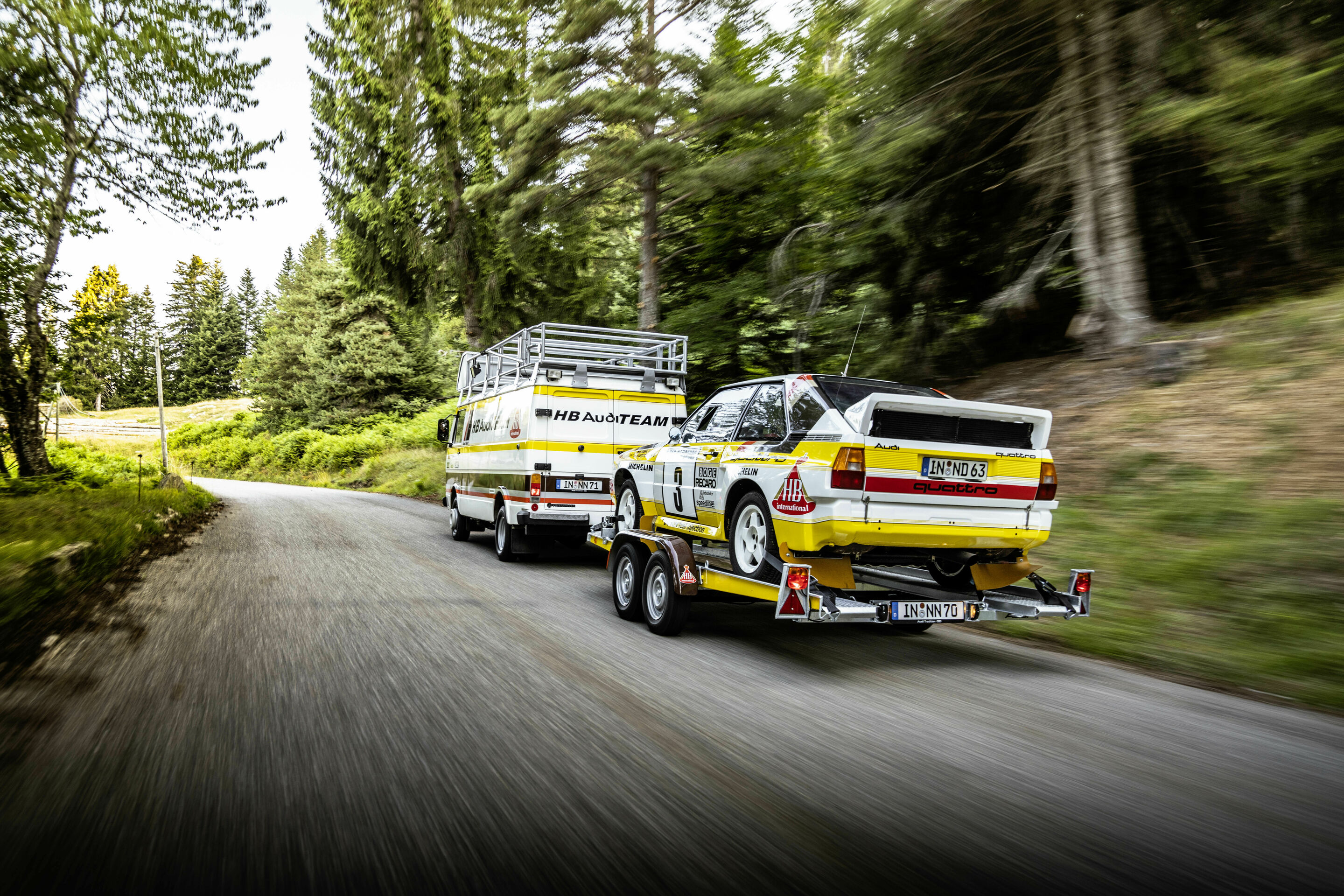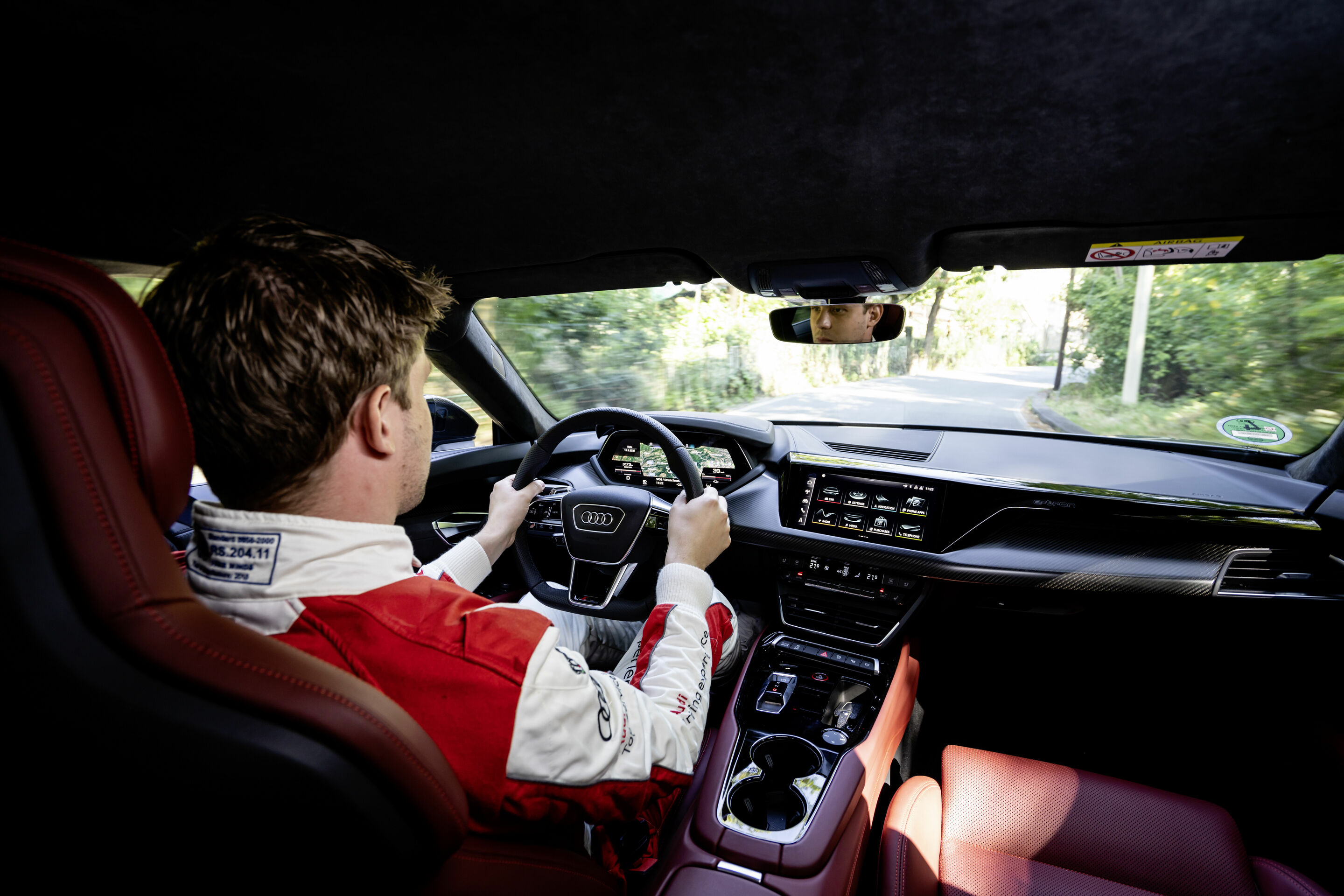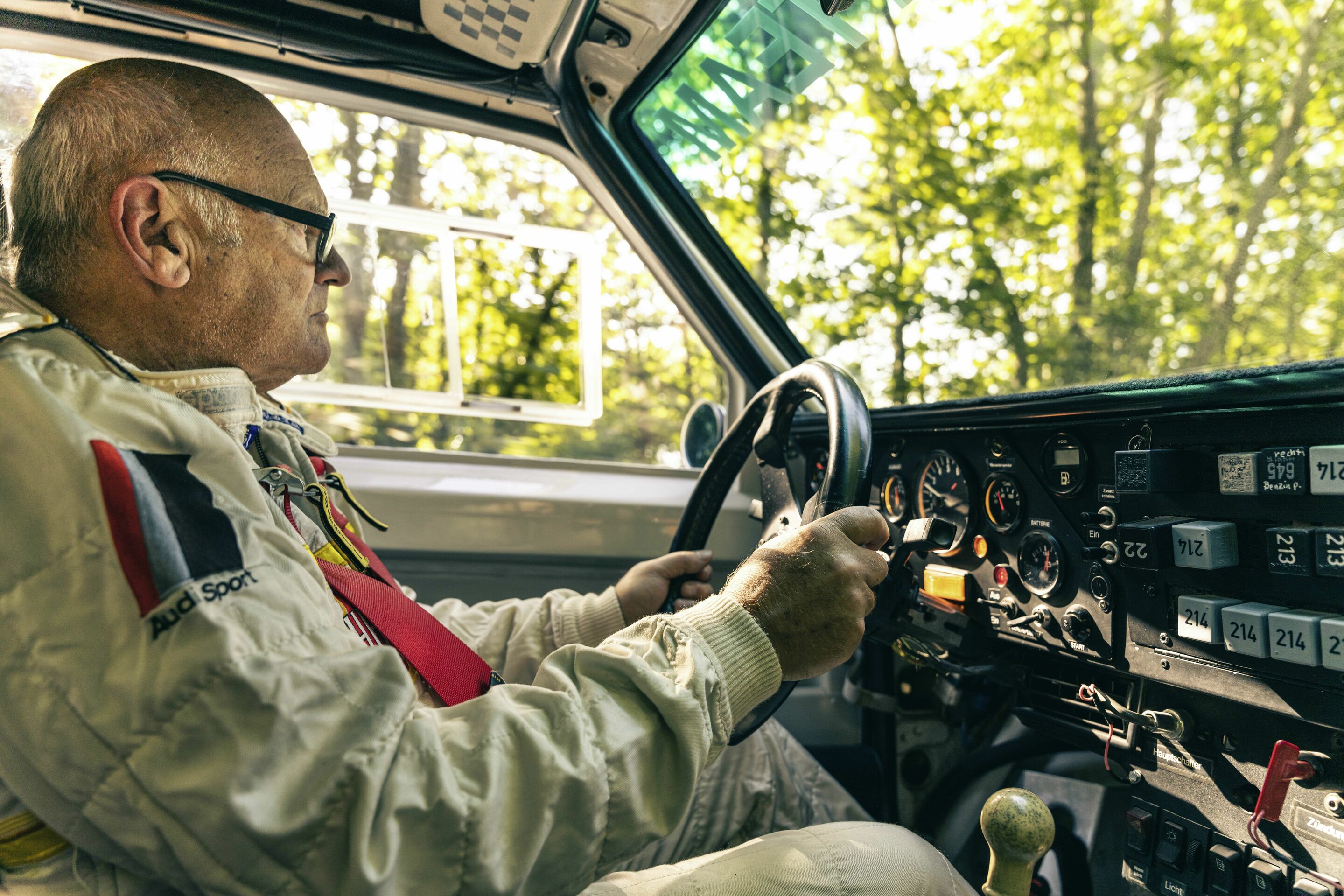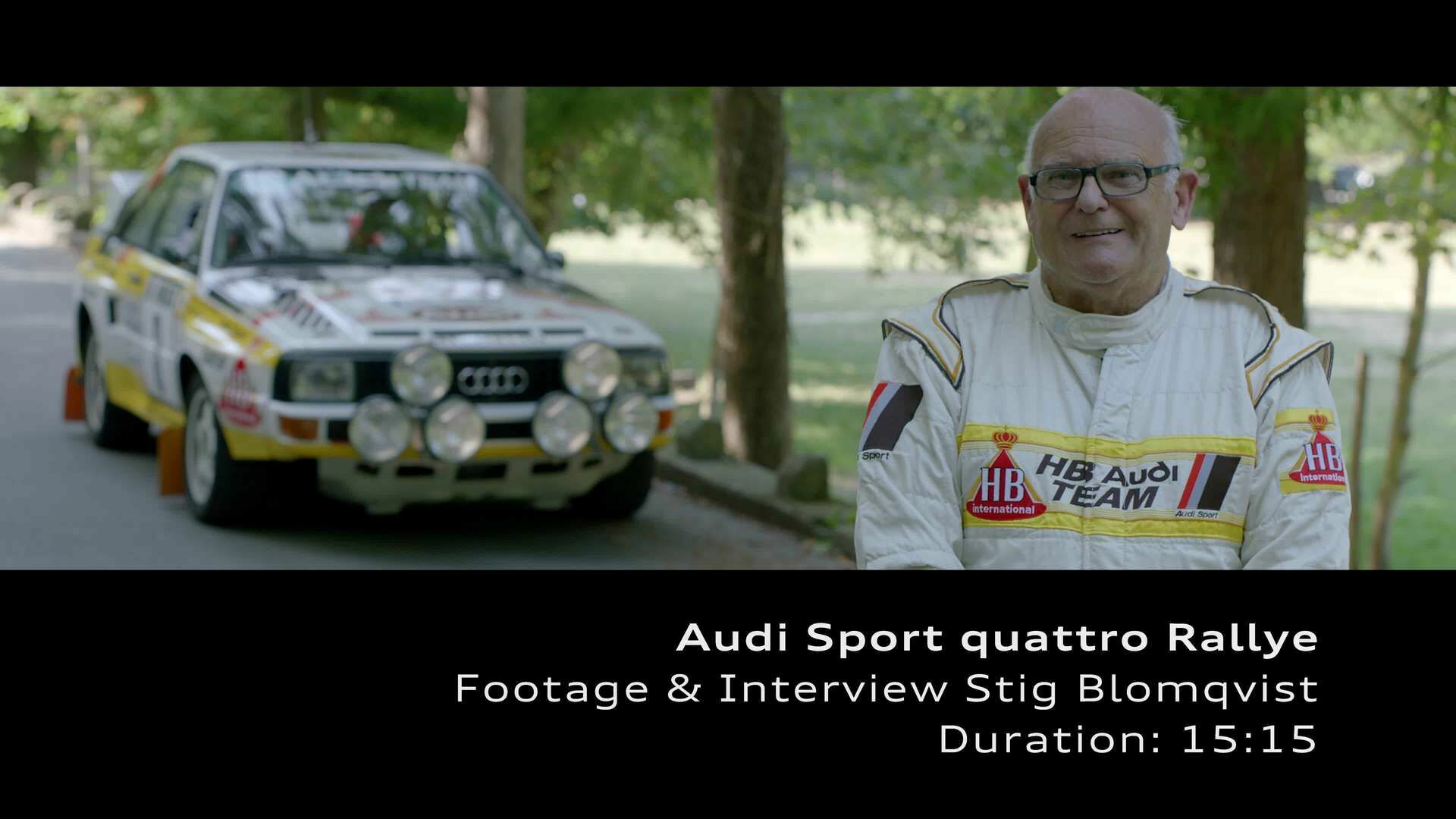Rally world champion Stig Blomqvist:
“The RS e-tron GT gives off a quattro feeling through and through“
- Two world champions from 1984 and 2017 swap cockpits
- What connects the legendary Audi Sport quattro S1 with the RS e-tron GT
- Can emotionality also transfer to the electric age?
Both are top athletes: Sweden’s Stig Blomqvist wrote rally history with the Audi Sport quattro S1 in the 1980s. It was an era that established the legend of what was then Audi’s revolutionary drive concept. Lucas di Grassi was Audi’s most successful driver in the history of the Formula E championship. The two exchanged cockpits in Sanremo. Blomqvist climbed into the Audi RS e-tron GT and di Grassi into the Audi Sport quattro S1. Both racecar drivers reflect on the golden age of rallying and discuss the electrified present.
Lucas di Grassi: Stig, you drove the legendary Audi Sport quattro S1 in the Sanremo Rallye in the 1980s. What did you think of the Audi RS e-tron GT’s performance on that road?
Stig Blomqvist: At the Rallye Sanremo, I really know every centimeter. It has fantastic scenery with narrow mountain roads that are like a roller coaster. The Audi RS e-tron GT weighs over a ton, so of course it’s significantly heavier than the S1 and it has a longer wheelbase. But thanks to the all-wheel steering and very low center of gravity, it’s very nimble in the way it handles corners. Thanks to the quattro drive system, the threshold politely announces itself and doesn't give the driver unsolvable problems. One thing is clear: the S1 was conceived as a rally car and the RS e-tron GT is a series model, yet they are surprisingly similar on the road, when you consider their basic design. How did you manage with the S1, Lucas?
Lucas di Grassi: I’ll put it this way: the RS e-tron GT is for everyone, but the S1 is more for professionals. With its opulent wing structure the car is extremely appealing even from the outside. But driving it is a completely unique challenge! Where the RS e-tron GT is easy for the driver to use and control and can be personalized with software, the S1 is a purely analog vehicle and demands everything from the driver. The clutch and brake pedal need extreme pressure and you have to slam the gears through the link, short and crisp, when shifting. Speaking of changing gears, did you feel that was lacking in the RS e-tron GT?
Stig Blomqvist: It’s all a matter of what you’re used to. For me, as a rally driver, that includes manual shifting. Back then, paddle shifters were inconceivable. The e-tron GT quattro is a Gran Turismo, so it’s built for longer journeys. In the RS version, the driving dynamics are particularly pronounced. In that respect, the automatic two-gear transmission is a fine thing. The car balances comfort and sportiness extremely well. The adaptive dampers and three-chamber air suspension allow the car to respond to road conditions very directly and also reduces pitching and wavering in the body. And with nearly 600 PS and 830 Nm of torque, it’s not lacking in dynamics.
Lucas di Grassi: Oh yeah, both of these electric engines really pack a punch.In overboost mode, that’s 475 kilowatts – almost 650 PS in your world, Stig. With Launch Control, the RS e-tron GT covers 400 meters (1312 feet) of asphalt at about 230 km/h (143 mph). The S1 can’t make numbers like that, of course, but 450 PS distributed over 1,000 kg (2,205 lbs.) of unladen weight is still extremely brutal today. Which technical innovations in the RS e-tron GT are particularly coming into play for you here in the mountain stage of the Rallye Sanremo?
Stig Blomqvist: What I particularly like is the targeted torque vectoring. It allows the rear of the RS to be banked by applying the brakes to the rear wheel on the inside of the curve in a way that creates more agility. That’s very helpful on this stretch. And the electronic differential lock on the rear axle improves traction on spinning wheels a lot.
Lucas di Grassi: I also find the torque vectoring you mentioned really great from my own experience. The electric SUVs e-tron S and e-tron S Sportback have three electric motors each – they allow the benefits of the conventional sport differential to be applied to the rear axle. When the car turns quickly into a curve, the electric motor gives the outside rear wheel extra torque, while the inner rear wheel is slowed down correspondingly. But let’s go from technical facts to emotion. The S1’s sound is brutal, an unrelenting, angry rumble, plus the whistle of the turbo to boot! Do you miss that emotion with the RS e-tron GT?
Stig Blomqvist: Personally, I’ll always have a very particular emotional relationship with the S1, which I don’t have with any other car. I became world champion in 1984 with the Sport quattro. You don’t forget that. Apart from the driving experience, the RS e-tron GT has an emotional effect on me in many ways. First, the aesthetic design is fascinating to me: the low roof, the wide cheeks, the short overhangs. When I unlocked the Audi, I was greeted with a light show. It's a small thing, but it gives the car personality. The sporty seat position behind the flattened RS steering wheel with non-slip perforated leather, which happens to be ideal for this road, is also satisfying. If you look at the heavily accentuated quattro blisters on the front end, it will remind you of the ur-quattro. And to come back to your question, the electronic sound fits really well with it.
Lucas di Grassi: For me, Audi has found a completely unique interpretation of a sporty sound in the electric age. That also applies to quattro technology, which is continuously getting better and more efficient. Stig, does the RS e-tron GT carry on the spirit of the Sport quattro?
Stig Blomqvist: Absolutely. The RS e-tron GT gives off a quattro feeling through and through. Thanks to the electrical drive system, it has crazy acceleration and its steering is transmitted directly in a sporty way that's also ideal for everyday use, unlike the S1, which has a really pointed steering. Depending on the driving program, the RS e-tron GT can even handle heavy oversteering through curves with targeted acceleration bursts. But in general, it’s a car that's calibrated to be extremely neutral with an activated ESC. Ultimately, the RS e-tron GT is the logical next step for the Sport quattro – 40 years after we shook up the rally world with the quattro drive system.
Lucas di Grassi: That's true.The Sport quattro was the big bang and lay the foundation for Audi’s series of successes in motorsport. Because it was so popular, almost every model has been given a quattro version. For ages now, every RS model has come with permanent all-wheel drive as a standard feature. Are you proud to be part of that history?
Stig Blomqvist: Proud is a strong word. But I’m incredibly grateful to have been able to experience this period. Driving in a team for four years is like living in a big family. The Sport quattro S1 was a winning car and its drive concept has established itself as a winning technology that has matured today into the timekeeper of Audi’s future in its electrified variants.
